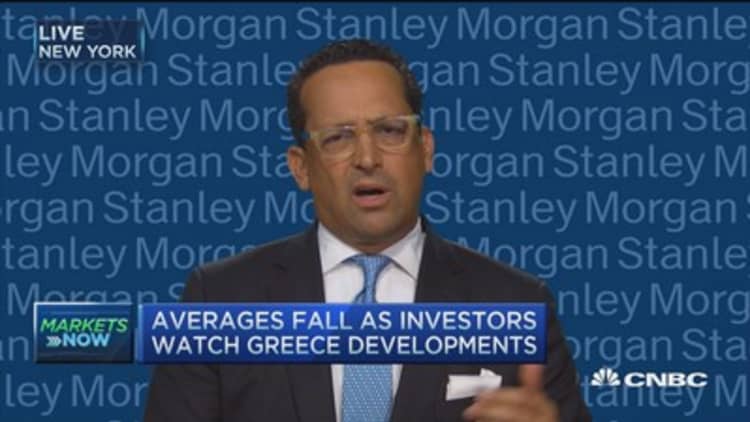
Wednesday's revision of first-quarter economic growth is a bullish sign for the second half of 2015, Morgan Stanley's chief U.S. equity strategist said.
Adam Parker said consensus estimates for the second quarter are too low, and while U.S. markets are at all-time highs, sentiment is relatively weak and has lagged other regions of the world.
"To me the setup is good. Why sell U.S equities when bottom-up numbers are too low, the economy is improving and sentiment's not that ebullient? Sounds like a winner to me," he told CNBC's "Squawk on the Street."
The Commerce Department said Wednesday gross domestic product fell at a 0.2 percent annual rate in the January-March quarter instead of the 0.7 percent pace of contraction it reported last month.
Read MoreWhy latest GDP data provide few clues on Fed
A fairly stronger pace of consumer spending than previously estimated accounted for much of the upward revision. Consumer spending, which accounts for more than two-thirds of U.S. economic activity, was revised up to a 2.1 percent growth pace from the 1.8 percent rate reported last month.
Parker said the United States is in the middle of its growth cycle. In order to call the top, market watchers would need to see the economy and the condition of the consumer and problems bubble up in credit markets.
"Absent that, you can have kind of a slow recovery, a slow retrenchment from the Fed, slow reflation and that could be a pretty positive backdrop for equities," he said.
Morgan Stanley expects mid- to high-single digit returns this year and has a 2,275 target for the , he said.
Financial stocks in particular have upside potential, he added. While Morgan Stanley's research and surveys show clients are optimistic about the sector, they are not positioned there, he said, adding banks are also set to benefit from a higher rate environment as the Federal Reserve prepares to lift its benchmark for the first time in nine years.
Read MoreDividend stocks to buy even if interest rates rise
Parker noted banks have been the best-performing industry over the last three months, returning 8 to 8.5 percent, while the next best sectors have yielded 3 percent.
"I think you could see much more of that over the next six to nine months, so we really like the financials. I think it has defensive attributes because of share repurchases and dividend growth because of CCAR," he said, referring to the Fed's process for reviewing capital reserves. "It doesn't really get affected by currency. And then you have this offensive attribute of an economically sensitive business that's not really fully embedding that from the valuation perspective."
As for another outperforming sector, health care, Parker said Morgan Stanley is just above neutral on the space. While it is too early to short health-care stocks, the firm has started selling down some of the winners, he said.
"I'm a little bit worried that you'll see some of the biotechs and roll-up names get sold as the rates rise. Biotech in particular has a lot more sensitivity to interest rates than maybe everyone realizes," he said.
—Reuters contributed to this report.


